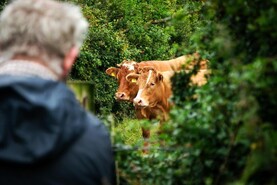A new report by Teagasc and Cork Institute of Technology (CIT) shows that Irish dairy farmers receive the lowest milk prices in Europe but have the highest profit margins, thanks to the low costs of seasonal, grass-based milk production.The report, titled An Analysis of the Irish Dairy Sector Post Quota, shows that Irish milk prices have averaged 29.8c/l since the lifting of milk quotas in 2015. By comparison, dairy farmers in Germany, France, Denmark and the Netherlands have all received higher milk prices on average during the same period (see figure 1).
A new report by Teagasc and Cork Institute of Technology (CIT) shows that Irish dairy farmers receive the lowest milk prices in Europe but have the highest profit margins, thanks to the low costs of seasonal, grass-based milk production.
The report, titled An Analysis of the Irish Dairy Sector Post Quota, shows that Irish milk prices have averaged 29.8c/l since the lifting of milk quotas in 2015. By comparison, dairy farmers in Germany, France, Denmark and the Netherlands have all received higher milk prices on average during the same period (see figure 1).
Dutch farmers
Dutch dairy farmers received the highest milk prices over the five-year period, with Friesland Campina paying out an average price of 35.2c/l since 2015.
However, the low cost of production in Ireland means Irish dairy farmers are considerably more profitable than their European counterparts. The report shows the average profit margin for Irish dairy farmers (excluding own-labour costs) was a healthy 8c/l. This is significantly ahead of profit margins in other countries.
Net profit margins stand at 4.6c/l in the UK, 3.6c/l in the Netherlands, 2.7c/l in Germany, 2.5c/l in France and just 1c/l in Denmark.
Lower milk prices
The reason for lower milk prices in Ireland is twofold.
Firstly, the seasonal nature of milk production in Ireland means the cost of processing milk is higher than in a country where milk supply is fairly consistent all year round. The utilisation of milk processing capacity is just 62% in Ireland, compared to over 90% in all other European countries. The seasonal nature of Irish milk flows means most product gets processed into lower-margin dairy commodities like butter, cheese and milk powder.
Secondly, the significant investment in extra processing capacity in the Irish dairy industry means co-ops have seen an increased strain on cashflow over recent years in order to fund this capital expansion.
The report suggests that once debt levels in the industry begin to reduce, dairy co-ops will have more cash to pay out in milk price.





SHARING OPTIONS: